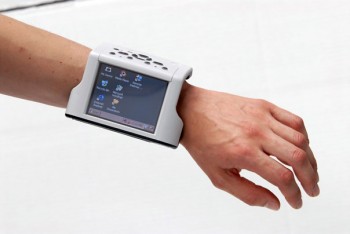The Challenge
The Defense Advance Research Projects Agency is an arm of USDOD which has been birthplace for some of the greatest developments in technology of the late 20th Century, including the internet! DARPA had the first Grand Challenge in 2004 which featured a 150-mile road race with the most successful competitor reaching 7.38 mi. The second competition, held in 2005 featured a 132-mile off-road race was finished by five competitors and paved way for the Urban Challenge which was held in 2007.
Awesome-O
Last year, for my Introduction to Robotics course, my partner and I were tasked to research an application of robotics of our choice. Being an autonomous vehicle fanatic, I essentially did all the research myself and let him take care of compiling the presentation. After selecting to study the third-place finalist, Odin, I shot an e-mail over to the professor in charge of the project who replied with two papers: one about navigation, the other about driving. I had previously learned a lot about path-following and simple algorithms from our very own autonomous vehicle:
 |
| Awesome-O - Our maze-solving robot |
Odin | Boss
The Victor Tango team of Virginia Tech utilized a slew of LabVIEW and NI software and interfaces to work with the many sensors, controllers and other instruments to achieve autonomy. The navigation paper describes a state machine architecture which identifies objects, sets goals and maneuvers around obstacles to reach a set destination. The following video from Wired provides an idea of what it takes for the competition champion, Boss (Tartan Racing), although I'm not sure what the flux capacitor is used for. http://www.youtube.com/watch?v=lULl63ERek0
How can you get a car to drive all by itself?
Basically, the vehicle first receives instructions about where it needs to go and possibly how it should get there. It is also supplied with information regarding where it can or cannot go including some areas where some behaviors are restricted i.e. passing. By utilizing various combinations of instruments (LIDAR, RADAR, Differential GPS, INS, and various Optical Cameras), they are able to create a very accurate model of where the vehicle is and what is in its immediate (and sometimes distant) environment. From there, the software is able to 'make decisions' about how to behave and what exactly to do. Once an action decision is made, it is then carried out usually through drive-by-wire interface to the throttle, steering, shifting, and braking systems. The end result is an autonomous, driverless vehicle which can robustly reach a set destination irregardless of obstacles and the behavior of other vehicles. The whole is indeed greater than the sum of its parts:
Commercialization
The Urban Challenge was in 2007 and a lot really has happened since then. Most notable might be the commercial adoption of several autonomous features for parking and accident avoidance in luxury vehicles although this trend began way back in 1999 with the Japanese Nissan Cima. However, these commercial vehicles certainly have their limitations as well:
Shelley to Speed up Pikes Peak!
After winning the 2005 DARPA Grand Challenge with Stanley and placing second in the 2007 Urban Challenge with Junior, the Stanford Racing Team is betting against all the odds and limitations to brave the arduous Pikes Peak race next month (September 2010) with Shelley, an Audi TTS, named after "Michèle Mouton, the first female driver to win the uphill climb." - http://news.stanford.edu/news/2010/february1/shelley-pikes-peak-020310.html
"Unlike Stanley and Junior, who sense the road with radars and cameras, Shelley will follow a GPS trail from start to finish. The trick will be to stay on the road at race speeds while sliding around the corners."Although the vehicle is not quite as autonomous as its predecessor, it is facing a daunting challenge and intends on doing so at ridiculous speeds. "If anything goes wrong on the summit, someone on the team can flip the "kill switch," Shelley's only remote control feature."
Excitement and Anticipation
I can't wait to see this car in action! Nerves are already on edge, media is starting to get excited and it's going to be a true spectacle to behold! If I can, I will try to go see it live. However, I still can't find a source which states the exact date in September that the timed race will be held. Now, if you're like me and can't wait, check out Shelley as she makes final preparations for the race:
Further reading:
Check out the August 12 Scientific American article -
Automatic Auto: A Car That Drives Itself
February 3, 2010 Stanford University News article -
Stanford's robotic Audi to brave Pikes Peak without a driver
If you would like a copy of the technical Virginia Tech publications, send me a message @fadeyifemi and I will connect you to my source.
Thanks for reading, hope this contributed a little to your Engineering Genius. Interested in more tech news, check out the T3CH H3LP blog I came across a little while back.
Thanks for reading, hope this contributed a little to your Engineering Genius. Interested in more tech news, check out the T3CH H3LP blog I came across a little while back.




















